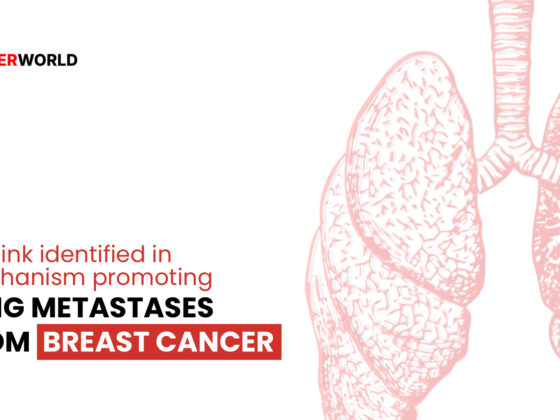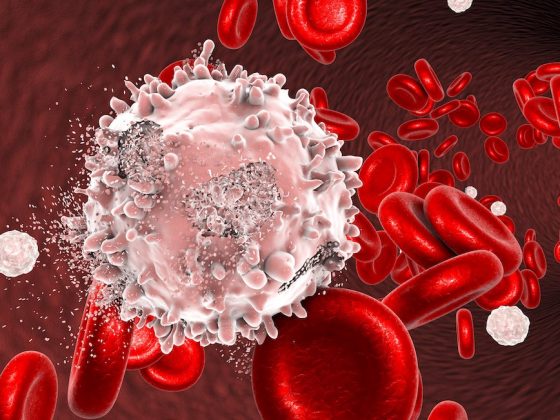Women with endometriosis have a fourfold higher risk of any type of ovarian cancer and those with severe endometriosis a 10 fold higher risk compared to women who do not have the condition. The study, which involved a cohort of nearly 80,000 women with endometriosis, and was published in Journal of the American Medical Association, July 17, found that those with the most severe forms of endometriosis faced nearly 19 times the risk of type I ovarian cancer.
“Women with endometriosis, especially more severe subtypes, have a markedly increased ovarian cancer risk and may be an important population for targeted cancer screening and prevention studies,” write the authors, led by Karen Schliep, from the Division of Public Health at University of Utah Health, Salt Lake City.
Endometriosis, a disease where tissue lining the uterus grows elsewhere in the pelvic cavity, is thought to affect approximately 11% of reproductive aged women. Although pelvic pain and infertility are the best known comorbidities of endometriosis, ovarian, breast and endometrial cancers have also been associated with the condition. “Endometriosis is thought to be the tissue of origin for both endometrioid and clear cell ovarian cancer, the two ovarian cancer histotypes most highly associated with endometriosis. Furthermore, there is evidence for a genetic overlap between endometriosis and clear cell ovarian cancer, and there are hormonal, immunological, and inflammatory markers associated with both endometriosis and ovarian cancer,” Schliep tells Cancerworld.
While multiple studies have demonstrated endometriosis to be associated with an increased risk of ovarian cancer, the association between endometriosis subtypes and ovarian cancer histotypes (range of tissue types in a tumour) has not been well-described. In the current population-based cohort study, Schliep and colleagues set out to evaluate the association of endometriosis subtypes with incidence of ovarian cancer, both overall and according to histotype. “This study is the largest study to date to assess the association between endometriosis typology and ovarian cancer overall and by histotype. A large study was needed to have the power to look at endometriosis typology in relation to ovarian cancer subtypes,” says Schliep.
First, the investigators from the Division of Public Health and the Huntsman Cancer Institute, both at the University of Utah, identified all women aged 18 to 55 years with a diagnosis of endometriosis in the Utah Population Database (UPDB), a resource including information on more than 11 million individuals. The resulting 78,893 women with a history of endometriosis (exposed) were then matched using a 1:5 ratio to 379,043 women without a history of endometriosis (unexposed), according to birth year and birth place (Utah/ other). All unexposed women were resident in Utah at the time when the endometriosis case they were matched with was diagnosed. In the exposed group, endometriosis cases were categorised as superficial peritoneal endometriosis (n=39,277; 49.8%), ovarian endometriomas (n=18,977; 24.1%), concurrent deep-infiltrating endometriosis (n=1,374; 1.7%), and deep-infiltrating endometriosis (n=1,028; 1.3%), or other (n=18,237; 23.1%). Furthermore, for the main analyses, the investigators grouped ovarian cancer cases into the commonly used classifications of type I (endometrioid, clear cell, mucinous, and low-grade serous) and type II (high-grade serous).
Results showed that the study population had a mean age at first endometriosis diagnosis of 36 years and a mean follow-up duration of 12 years. Altogether 597 women were diagnosed with ovarian cancer.
Overall, ovarian cancer risk was higher among women with endometriosis in comparison to women without endometriosis (adjusted HR=4.20; 95%CI 3.59–4.91). Risk of type I ovarian cancer was especially high for women with endometriosis (aHR=7.48; 95%CI 5.80–9.65).
Ovarian cancer risk was highest in women with deep infiltrating endometriosis and/or ovarian endometriomas for all ovarian cancers (aHR=9.66; 95%CI 7.77–12.00), type I ovarian cancer (aHR=18.96; 95%CI 13.78–26.08), and type II ovarian cancer (aHR=3.72; 95%CI 2.31–5.98).
“By quantifying the strong associations between deep infiltrating endometriosis and/or ovarian endometriomas subtypes and ovarian cancer risk, this study identified a population that may benefit from ovarian cancer screening or more aggressive prevention strategies,” conclude the authors.
Ultimately, for more accurate assessments, the new information on endometriosis typology could be incorporated into risk prediction models in conjunction with other important ovarian cancer risk factors, such as BRCA1/2 variations and socio-demographic characteristics (such as family history of reproductive cancers). Furthermore, add the authors, because endometriosis subtypes have different aetiology and risk factors, study observations could lead to novel hypotheses regarding ovarian cancer aetiology and the identification of novel molecular targets for ovarian cancer treatments.
“Women with endometriosis shouldn’t be alarmed by our findings,” stresses Schliep. “While endometriosis typology may be an important factor to consider in risk prediction models for the future, the chance of ovarian cancer, with or without endometriosis, is low, we found only 10–20 additional cases per 10,000 individuals with endometriosis over the course of the 23-year follow up period.”
In an accompanying editorial, Michael McHale, from UC San Diego Health, writes that the study provides important new information identifying an increased risk of ovarian cancer with a particular phenotype of endometriosis. “It is imperative that future investigations explore the biology of this association and mechanisms contributing to malignant transformation. Moreover, molecular assessment of women with endometriosis and ovarian cancer, compared with women with endometriosis without ovarian cancer, may facilitate the identification of women at higher risk. Ultimately, characterizing these differences could support consideration for a more prescriptive surveillance recommendation or possible strategies for risk reduction,” he writes.
The study, he says, supports the importance of counselling women with deep infiltrating and/or ovarian endometriosis regarding the increased risk for ovarian cancer. “Although the absolute number of ovarian cancers is limited, the increased risk is significant,” he adds.












